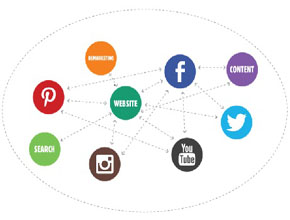Our Other Solutions
Overview : Unified Threat Management - UTM
The UTM Firewall appliance is a network security tool that easily integrates with existing IT infrastructure, providing top notch features to help in focus on business instead of spending valuable time handling IT security issues.
Why UTM ?
Hackers have become more sophisticated, and their attacks more targeted. Many of today's attacks are blended attacks, which actually use multiple techniques to try to infiltrate your network, and it's necessary to use an array of techniques to combat those attacks. But, managing multiple, separate security tools can be overwhelming and inefficient, not to mention expensive. Unified Threat Management (UTM) is the latest approach to security--bringing a new level of efficiency to the security field.
The typical challenges faced by businesses today :
- Limited manpower & IT resources
- Limited IT Budgets
- Technology & Challenges for IT upgradations
- Data Theft, protecting Confidential data leaking through Emails
- Ever changing Business Processes and integrating third party softwares
- Maintaining regular Data Backups versions
- Avoiding Internet mis-use, Internet access and website restrictions ( Stock Market, Adult sites, etc.) , Internet usage limitations
- Get rid of Spam Emails
Features :
- Firewall
- Virtual Private Network (VPN)
- Gateway Anti-Virus & Anti-Spyware
- Gateway Anti-Spam
- Intrusion Prevention System (IPS)
- Content & Application Filtering
- Bandwidth Management
- Multiple Link Management
Advantage :
- Identity-based Security Identifies “Who is doing What?”
- Single Administrative Interface for all functions
- Secures even in DHCP & Wi-fi environments
- Eliminates need for Technical Manpower at Small Offices
- Reduced Capital & Operational Expenditures
- Frees you from Multiple Vendors, Upgrades & Patches
- Flexible, Easy-to-deploy & Easy-to-manage
This overview introduces virtualization technologies, focusing on various areas including hardware virtualization, presentation virtualization and application virtualization. Since every technology, virtual or otherwise, must be effectively managed, this discussion also looks at available management products for a virtual world. The goal is to make clear what these offerings do, describe a bit about how they do it, and show how they work together.
Virtualization technologies provide a range of benefits. Yet as an organization’s computing environment gets more virtualized, it also gets more abstract. Increasing abstraction can increase complexity, making it harder for IT staff to control their world. The corollary is clear: If a virtualized world isn’t managed well, its benefits can be elusive.
The pull of virtualization is strong—the economics are too attractive to resist. And for most organizations, there’s no reason to fight against this pull. Well-managed virtualization technologies can make their world better.
Take a broad view of this area, providing hardware virtualization, presentation virtualization, application virtualization, and more. The company also takes a broad view of management, with virtualized technologies given equal weight to their physical counterparts. As the popularity of virtualization continues to grow, these technologies are becoming a bedrock of modern computing.
Benefits
- Consolidates multiple, under-utilized physical servers on a single host, running Virtual Machines
- Reduces workforce/space/kilowatt by leveraging virtualization for server consolidation and agilit
- Helps save money because less managing, less space and less kilowatt hours are needed



